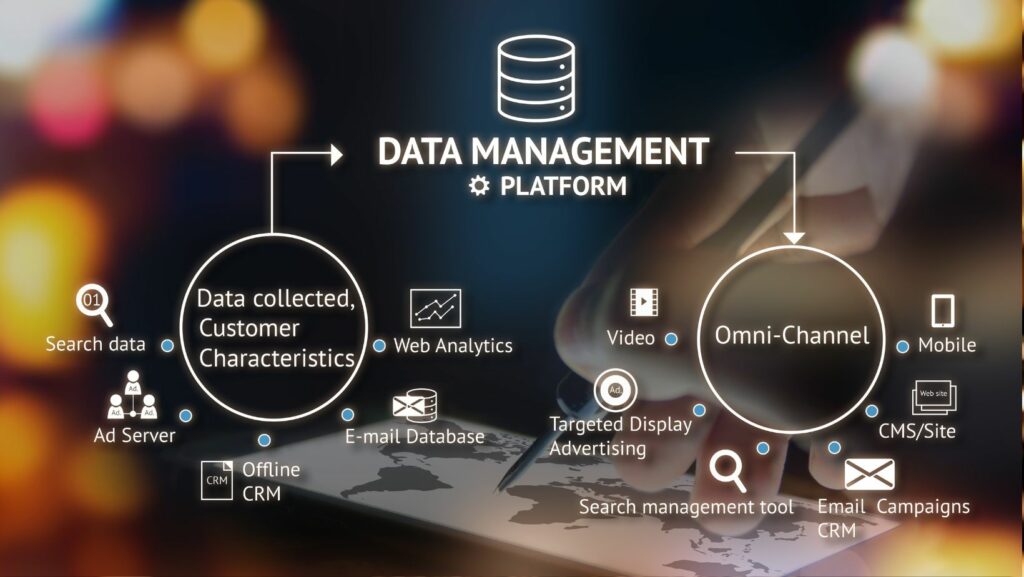Customer Data Platform
A Customer Data Platform, often abbreviated to CDP, gets characterized by its ability to aggregate and organize data from various sources. It’s a type of software that creates a unified database accessible to other systems. The primary purpose of this technology lies in collecting customer data from several points, such as websites, apps, and emails, among others. Brands like Nike and Toyota, for instance, utilize CDPs to tailor their marketing campaigns, providing an entirely personalized and consistent customer experience.
The function of a CDP revolves around assembling customer data and providing it in an organized format. A CDP takes data from all sources, cleans it, and consolidates it into individual, unified customer profiles. This process, in turn, increases efficiency, as it eradicates the necessity of connecting separate data sources manually. Brands efficiently utilize these profiles for marketing automation, targeting, and segmentation. For example, Spotify uses its customer data platform to suggest personalized music recommendations based on a user’s listening history, thereby enhancing user experience and engagement.
The Benefits of Using a Customer Data Platform
Businesses acquire heaps of benefits through use of a Customer Data Platform (CDP). Specifically, marketing efficiency improves, customer experiences enhance.
Boosting marketing efficiency ranks as a prime benefit of employing a CDP. Brands gain the ability to amass, clean, and consolidate data from numerous sources. This results in the creation of thorough customer profiles, allowing a focus on personalized marketing strategies. Financial firm, JP Morgan, for instance, uses a CDP to precisely target prospective clients based on data patterns and triggers. The platform performs this by filtering through copious amount of client data and spotting patterns, which it then acts on to deliver efficient marketing campaigns.
CDPs significantly aid in elevating the overall customer experience. Engagement heightens as these platforms give companies the ability to tailor their offering as per customer preferences. Netflix provides an excellent illustration of this. It uses its CDP to analyze viewing patterns, recognize favorites, and thereby recommend television series and movies as per each subscriber’s tastes. This strategy keeps users engaged and enhances their overall experience on the platform – a clear testament to the customer experience enhancement provided by CDPs.
How a Customer Data Platform Works
A Customer Data Platform, or CDP, functions by incorporating data collection, unification, and segmentation – each critical in unlocking gainful insights and driving successful marketing initiatives.
A starting point in the Customer Data Platform’s operation is the accumulation of customer data. That includes data from several touchpoints like websites, CRM systems, mobile applications, and social media platforms. Let’s consider a retail brand example. The brand collects information about a customer’s online browsing behavior, buying history, and responses to email campaigns. It gathers transactional data from in-store purchases, and demographic data through customer feedback forms.
Following data collection, the CDP works on unification and segmentation tasks. It aggregates data from disparate systems, then merges and cleans them to form a single, comprehensive customer view. For instance, the retail brand above might have a customer who browses products online but prefers buying in-store. The CDP unifies this omnichannel data to formulate a cohesive customer profile.
This profile isn’t merely for viewing. The platform next segments the data into meaningful groups based on criteria like behavior, preference, and demographics. That helps businesses provide personalized marketing, such as how Netflix recommends shows based on user genre preferences. Businesses can then use these segmented customer profiles to send targeted communications, fostering greater customer engagement and loyalty.
A strong feature to seek out in a CDP is scalability. The CDP must reliably expand its capacity to store, process, and analyze data as the business grows. For instance, Amazon Web Services (AWS) offers scalable solutions that adjust to the needs of the business dynamically.
Integration capabilities also feature highly in a robust CDP. A good Platform should readily connect with various data sources and systems within a business. For example, Salesforce Integration Cloud can flawlessly link with ERP and CRM systems, offering seamless data transfer and processing.

